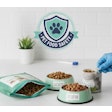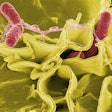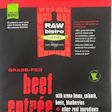The Organic Pet Food Task Force, convened under the auspices of the National Organic Standards Board, has released its recommendations for long-needed amendment of the United States Department of Agriculture (USDA) regulations pertaining to organic foods and feeds. A complete copy of its report may be found at http://www.ams.usda.gov/nosb/meetings/OrgPetFood.pdf. If the Task Force recommendations are accepted by the Board (and regulations based on such ultimately promulgated by USDA), it will go far in clarifying when and how "organic" claims for petfoods can be made.
Background
More than a decade after Congress passed the Organic Foods Production Act, USDA regulations for organic foods finally became effective in 2002. Regretfully from the petfood industry perspective, the regulations only applied to foods for human consumption and to livestock feeds. The rules for livestock feeds were very important to establish early in the process, since animals intended to be the sources of organic meat, milk and eggs for human consumption must be fed organic feed. Establishing rules for organic petfoods, however, was considered to be a less critical need at the time.
Unfortunately, the existing regulations for neither human foods nor livestock feeds were a good fit when it came to petfoods. The established human food categories [i.e., "100% organic," "organic" (95% organic ingredients) and "made with organic ____" (70% organic ingredients)] make sense when applied to petfoods. However, the human food regulations do not provide for many of the ingredients desirable, if not necessary, for inclusion in petfood products. On the other hand, livestock feed labels are not allowed to bear the third ("made with") organic claim. While that exclusion might make sense when dealing with food-producing animals, it would be unnecessarily restrictive when dealing with petfood products. Also, prohibition of use of mammalian and poultry slaughter by-products in organic livestock feeds could not reasonably be expected to apply to dog and cat foods for obvious reasons.
The lack of specific regulations has made the production of organic petfood confusing at best. At first, USDA told the industry and the Association of American Feed Control Officials (AAFCO) that the organic regulations would apply (http://www.aafco.org/organic_regs_pet_foods.pdf). A couple of years later, it issued a statement that products that were not subject to specifically-applicable USDA regulations (including petfoods) could not bear the USDA Organic Seal or otherwise imply compliance with the organic regulations. While that statement was subsequently rescinded (I can no longer even find evidence of its existence on the National Organic Program website), USDA still never has made it clear as to if and how organic petfoods could and should be labeled.
Task Force recommendations
The Task Force recommends amendment to the livestock feed regulations versus the human food regulations as the means to incorporate petfoods into the organic rules. This makes sense, since federal and state agencies generally regulate petfoods and livestock feeds together as an entity separate from human food regulation. To do that though, there must be additional changes to provide for exceptions from the livestock feed regulations in some matters.
For example, the amendments would provide for "made with organic ____" claims on petfood labels, even though such claims are not allowed on livestock feed labels. Petfoods would also be exempt from the restriction on use of slaughter by-products. At the same time, provisions to allow use of many of the synthetic nutrient ingredients necessary to help ensure nutritional adequacy of animal feeds, but not provided for in the human food regulations, are also incorporated in the proposed amendments. In fact, the Task Force has suggested that additional synthetic nutrients that have yet to appear on the "National List" of approved ingredients for livestock feeds be considered for inclusion in the List for use in petfoods.
To me, this last recommendation helps solve what I think is the most critical hindrance for the production of organic petfood at this time. I know of several circumstances where third-party certifying bodies have failed to allow use of nutrients like taurine in cat food, despite the fact that it is nutritionally essential to that species. I don't blame the certifiers. They are just following the rules, and could face severe penalties (including loss of accreditation) if they are lax in their oversight. However, this failure of the regulations to allow for reasonable use of synthetic nutrients must be rectified if organic petfoods are to come under USDA regulation.
While I find most of the amendments to be well thought out and reasonable, my major adverse comment regarding the proposal is how it deals with foods for specialty pets (e.g., small mammals, birds, fish, reptiles). The Task Force opines that foods for these species should be included in the new petfood rules. The proposed amendments even define "pet," "specialty pet," "pet food" and "specialty pet food" similarly to AAFCO. However, unlike AAFCO, the regulations to which the definitions are pertinent only reference "pet food," and not "specialty pet food."
While there is an added caveat in the "pet food" definition to include "specialty pet food" when applied to the regulations, such wording is self-contradictory and clumsy at best. I recommend that unless there is to be a regulation that is intended to apply to foods for dogs and cats, but not those for specialty pets (I couldn't find one), it would appear much clearer for the purposes of these regulations to simply define "pet" and "pet food" more broadly as to incorporate specialty pets (e.g., "Pet: dog, cat, or any domesticated animal normally maintained in a cage or tank, such as, but not limited to").
On the other side of things, the Task Force recommends that foods for horses, llamas, alpacas, rabbits and wild birds not be included in the new petfood rules. That's fine, saving that except for horses (which are already defined as "livestock"), the amendments would cause products for these species to fall into a regulatory limbo. Without some additional clarification, for example, rabbits may easily be presumed to be part of the specialty petfood category.
If the Task Force's intent is to be clear, I respectfully suggest "other ruminants" and "rabbits" be expressly included in the "livestock" definition. Wild birds clearly aren't "livestock," though, so perhaps foods for wild birds do not deserve to be part of the organic regulations at all. However, if that is the case, I further recommend that "wild birds" be expressly excluded from the "pet" definition for clarity's sake.

















